Key milestones and achievements in responsible aquaculture production during the organization’s first two decades
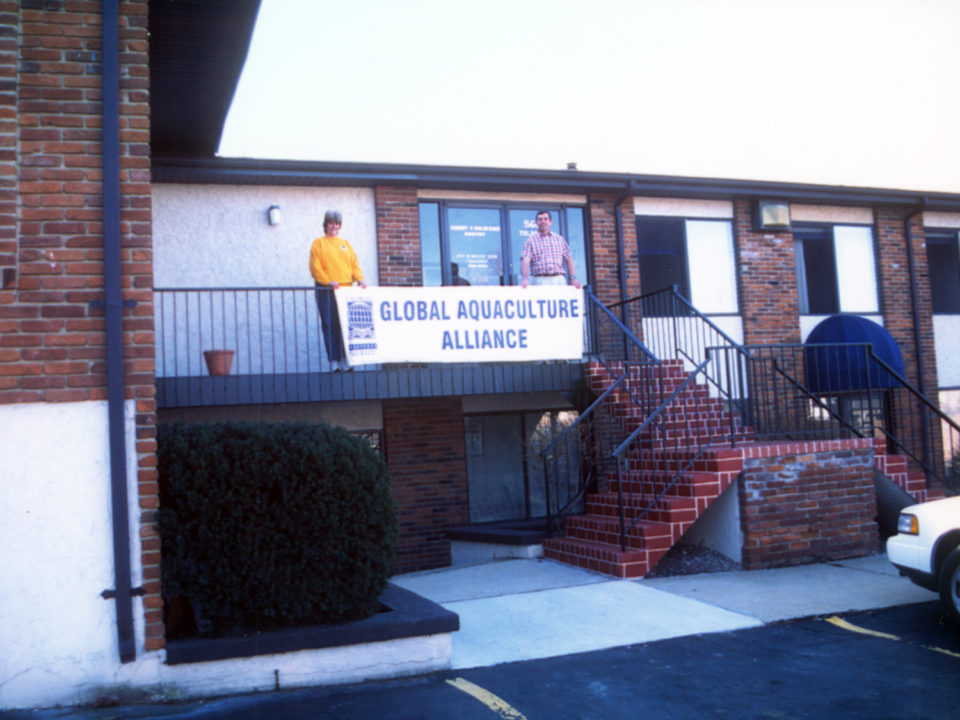
The Global Aquaculture Alliance was founded in 1997 by shrimp farmers and select seafood companies responding to mounting criticism regarding mangrove destruction.
Here are the key milestones and achievements by GAA and its third-party aquaculture certification scheme, Best Aquaculture Practices (BAP). For a recounting of the group’s formation 20 years ago, from several of the individuals directly involved, please click here.
1997
- Global Aquaculture Alliance founded
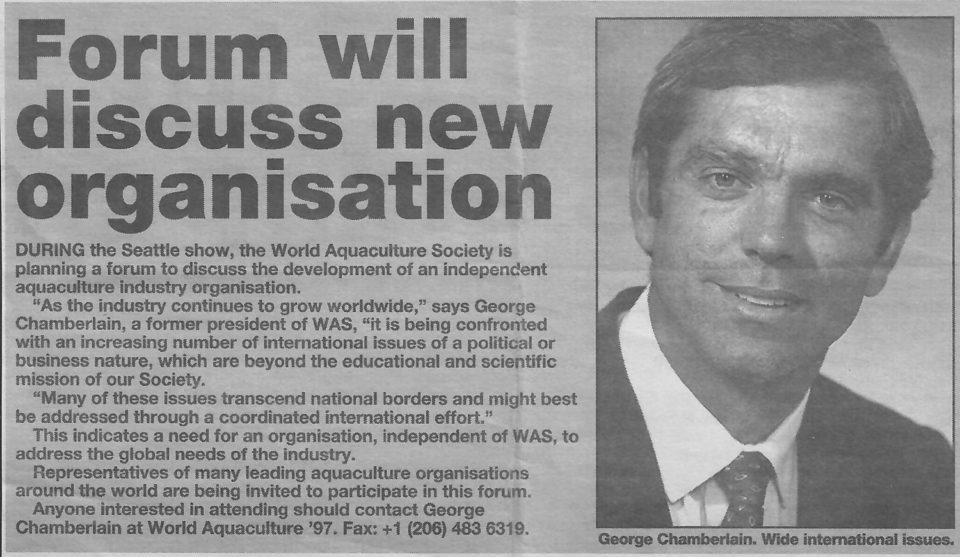
1998
- First annual board meeting at Aquaculture ’98 in Las Vegas, Nev.
- Published “Guiding Principles for Responsible Aquaculture” and “Mangrove Code of Practice”
- Published Vol. 1, Issue 1 of Global Aquaculture Advocate in March 1998 as an eight-page black-and-white newsletter
- GAA website launched
1999
- Published Codes of Practice for Responsible Shrimp Farming; accepted by aquaculture associations in Ecuador, Honduras and Nicaragua
- Defended Ecuadorian shrimp farming to U.S. National Marine Fisheries Service
- FAO granted GAA Liaison Status, and GAA participated in FAO-COFI meeting in Rome
- Participated in World Aquaculture ’99 (Sydney, Australia), Atlantic Aquaculture Exposition (St. Andrews, Canada) and AquaNor ’99 (Trondheim, Norway)
- Published Global Aquaculture Advocate Vol. 2, Issue 4/5 as an 80-page color magazine
2001
- Inaugural GSOL (Global Shrimp Outlook for Leadership) conference, Singapore

2002
- BAP certification standards completed for shrimp farms
- GSOL: Bali, Indonesia
2003
- Best Aquaculture Practices (BAP) certification program established
- 1st shrimp farm BAP certified in Belize
- GSOL: Los Cabos, Mexico
2004
- BAP certification standards completed for shrimp hatcheries
- 1st seafood processing plant BAP certified in Honduras
- GSOL: Bangkok, Thailand
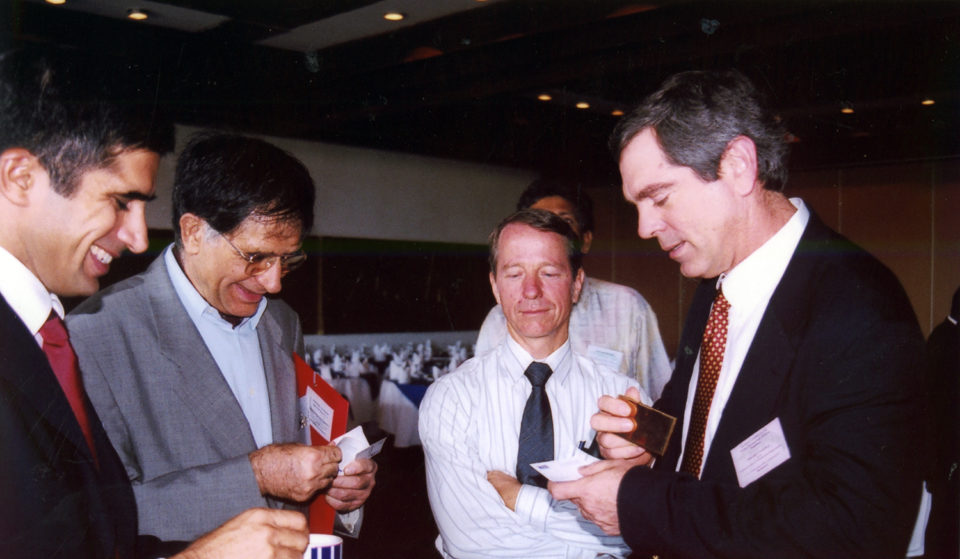
2005
- Walmart endorses BAP program
- GSOL: Ho Chi Minh City, Vietnam
- Inaugural GFOL (Global Fish Outlook for Leadership) conference: Chicago, Ill.
2006
- GSOL/GFOL: Miami, Fla.
2007
- Inaugural GOAL conference: Madrid, Spain
2008
- BAP certification standards for tilapia, catfish farms completed
- 1st tilapia farm BAP certified in China
- GOAL: Qindao, China
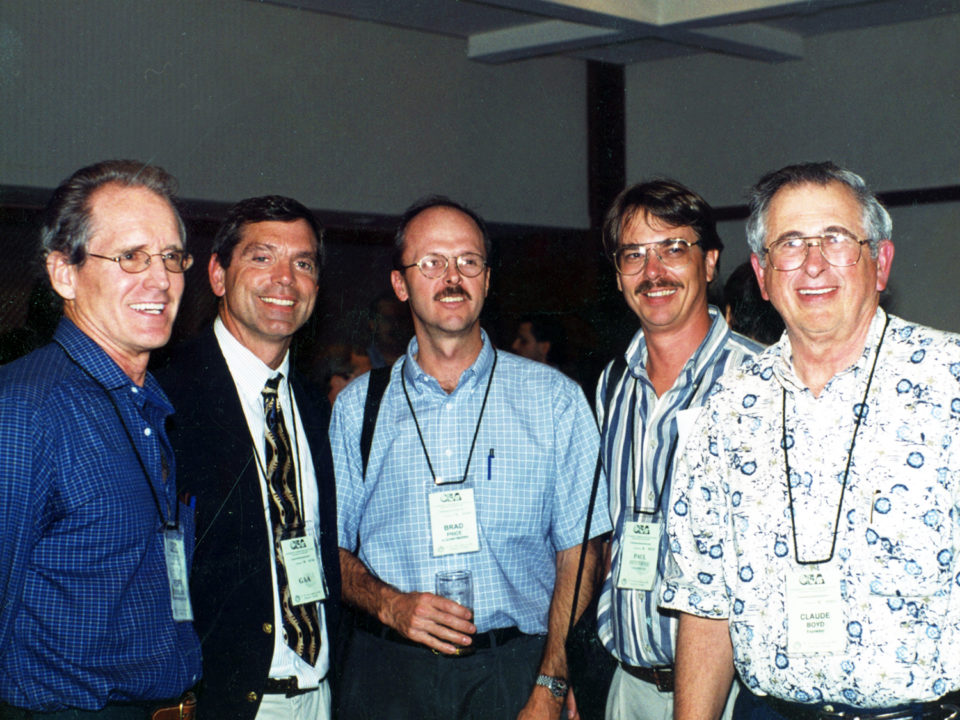
2009
- Sodexo endorses BAP certification
- GOAL: Seattle, Wash.
2010
- BAP achieves GFSI (Global Food Safety Initiative) benchmark
- BAP certification standards for feed mills, pangasius farms completed
- 1st pangasius farm BAP certified in Vietnam
- 1st feed mill BAP certified
- GOAL: Kuala Lumpur, Malaysia
- Delhaize America endorses BAP program
2011
- BAP certification standards for salmon completed
- 1st salmon farm BAP certified in Canada
- Wakefern, Lunds/Byerly’s endorse BAP program
- GOAL: Santiago, Chile
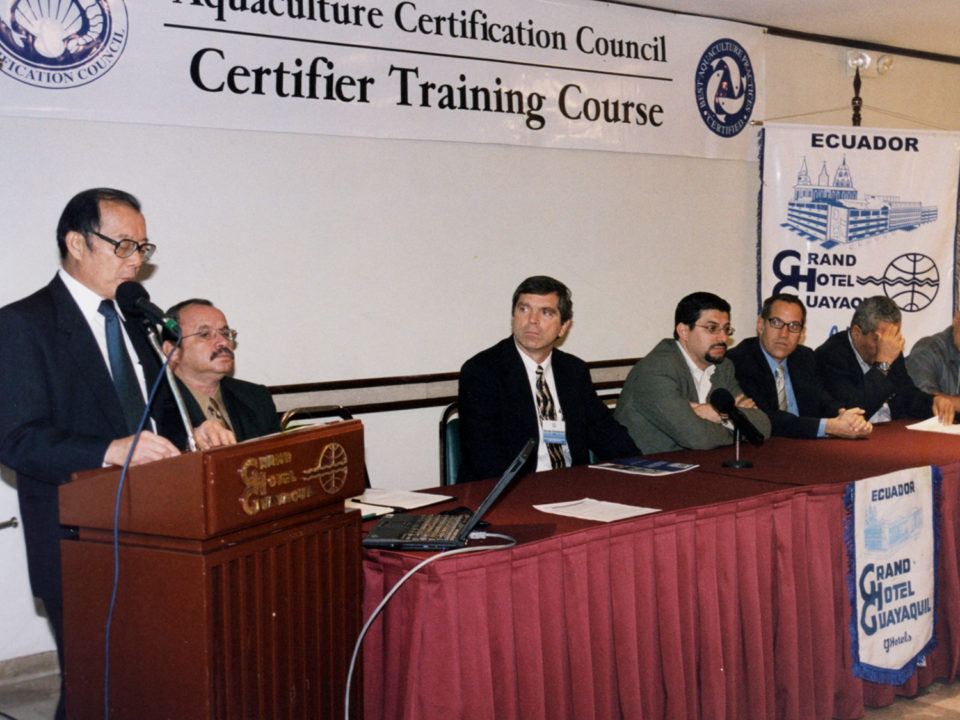
2012
- Responsible Aquaculture Foundation (RAF) established
- World Bank, RAF initiate case study on early mortality syndrome (EMS) in Vietnam
- BAP adds repacking plants to program
- BJ’s Wholesale Club, Tops Friendly Markets, Supervalu endorse BAP program
- GOAL: Bangkok, Thailand
2013
- BAP certification standards for finfish and crustacean farms completed
- BAP certification standards for mussel farms completed
- Deadly pathogen causing EMS uncovered
- Environmental trigger for EMS identified in shrimp ponds
- GOAL: Paris, France
2014
- 1st mussel farm BAP certified in Canada
- 1st mussel processing plant BAP certified in Canada
- 1st rainbow trout processor BAP certified in Colombia
- Two-star BAP shrimp standards deemed equivalent to a yellow Good Alternative rating by the Monterey Bay Aquarium Seafood Watch® program
- GAA spearheads EMS case study
- GAA signs memorandum of understanding (MoU) with the China Aquatic Products Processing and Marketing Alliance (CAPPMA)
- GOAL: Ho Chi Minh City, Vietnam
- GAA Partners with IFFO, Lyons, Morrisons to address social responsibility
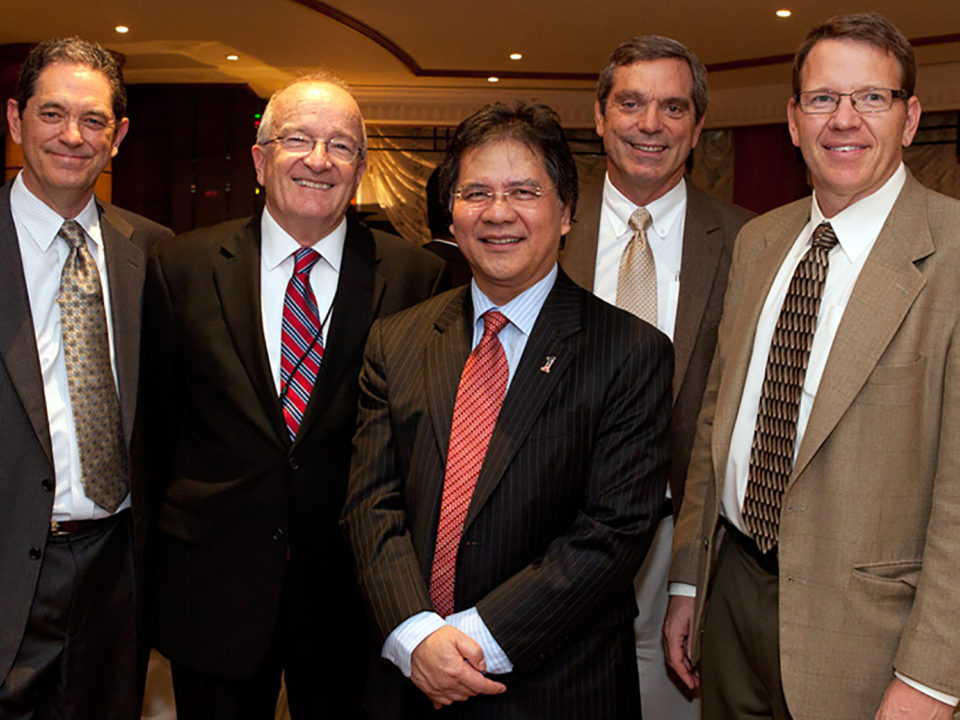
2015
- GOAL: Vancouver, Canada
- Number of BAP-certified facilities worldwide surpasses 1,000 in December
- iBAP program launched as a precursor to full BAP certification
- GAA prohibits BAP-certified processing plants from outsourcing processing of shrimp to third-party entities, to fight against labor abuse
- Brakes Group, M&J Seafood in the UK endorse BAP program
- 1st steelhead trout farm BAP certified in the United States
- 1st four-star BAP salmon hits the market
- Global Aquaculture Advocate shifts from print to online
2016
- GOAL: Guangzhou, China
- Number of BAP-certified facilities increases nearly 50 percent in 2016, surpassing 1,500 facilities worldwide
- BAP steps up logo-policing program with the deployment of a data-collection application
- 1st sea bass farm BAP certified in China
- BAP among the third-party certification programs included in Sysco Corp.’s renewed commitment to sourcing sustainable seafood
- 1st four-star BAP trout hits the market
- Brinker International endorses BAP program
- BAP certification standards for mollusk farms completed, replacing BAP mussel farm standards
- GAA signs MoU with the Saudi Aquaculture Society in which the country’s aquaculture facilities will be required to earn BAP certification
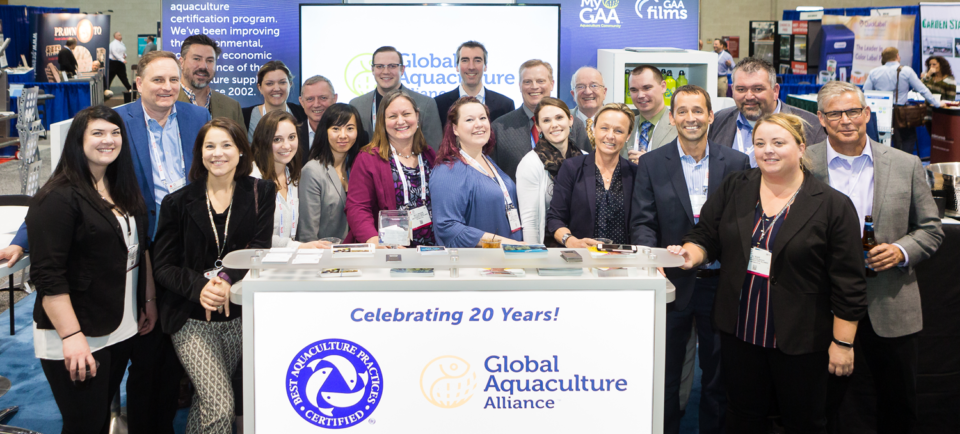
2017
- GAA celebrates 20th anniversary
- GOAL: Dublin, Ireland
- GAA launches MyGAA online community and GAA Films initiative
- GAA redesigns GAA and BAP websites, launches PORTal
- Number of BAP-certified facilities worldwide reaches 1,671 through the first half of 2017
- GAA’s draft Biosecurity Area Management Standard finalized and piloted in Chile, Colombia and Honduras
- Walmart approves BAP as an acceptable third-party certification program for monitoring the social compliance of its suppliers’ facilities
- 1st four-star BAP striped bass
- Monterey Bay Aquarium Seafood Watch® program deems two-, three- and four-star BAP tilapia as equivalent to its yellow Good Alternative rating
- 1st facility in Greece (feed mill) to be BAP certified
- 1st cobia facilities (farms, processing plant and hatchery in Panama) to be BAP certified
- 1st facility in Poland to be BAP certified
- 1st crawfish facility (processing plant in China) to be BAP certified
- 1st Arctic charr facility (processing plant) to be BAP certified
- RAF e-learning program relaunched and rebranded as Global Aquaculture Academy
Now that you've reached the end of the article ...
… please consider supporting GSA’s mission to advance responsible seafood practices through education, advocacy and third-party assurances. The Advocate aims to document the evolution of responsible seafood practices and share the expansive knowledge of our vast network of contributors.
By becoming a Global Seafood Alliance member, you’re ensuring that all of the pre-competitive work we do through member benefits, resources and events can continue. Individual membership costs just $50 a year.
Not a GSA member? Join us.
Author
-
Global Aquaculture Advocate
Global Aquaculture Alliance
Portsmouth, NH, USA
Tagged With
Related Posts
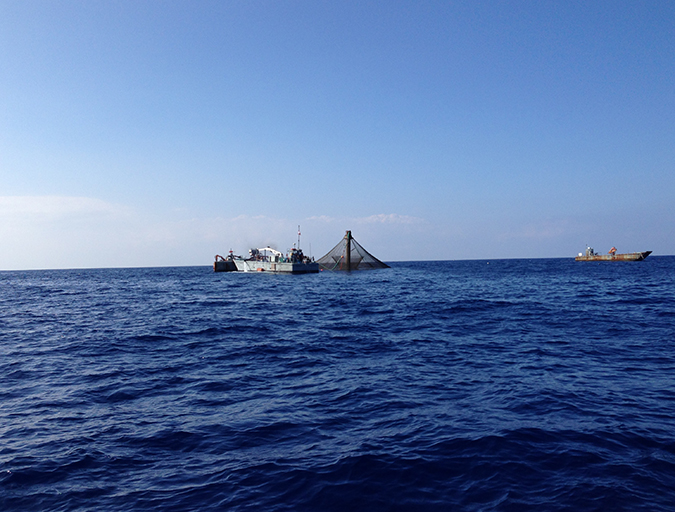
Intelligence
‘Spatiotemporal patterns’ indicate improving perceptions of aquaculture
A study led by University of California Santa Barbara researchers has found that public sentiment toward aquaculture improves over time, a potentially important development with growing interest in offshore aquaculture.
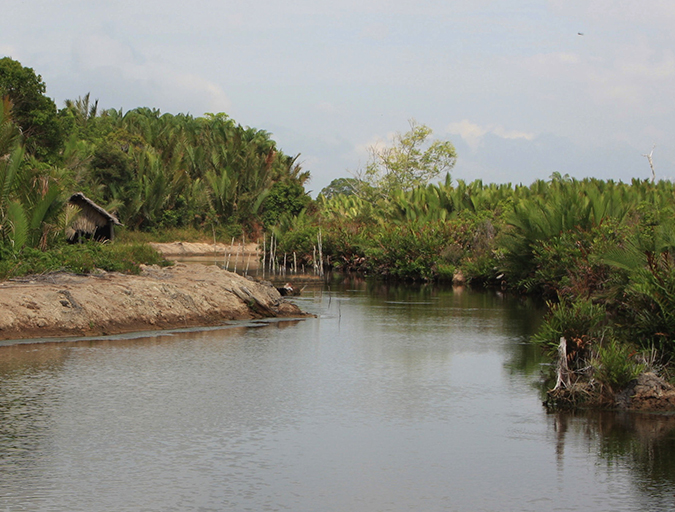
Intelligence
From forest to plate, a shrimp redefining ‘farmed’
The explosive growth of shrimp farming has long been associated with mangrove deforestation in Southeast Asia. A silvofishery method of producing the popular seafood is protecting the fragile ecosystems in Vietnam. A hungry marketplace is reaping the rewards.
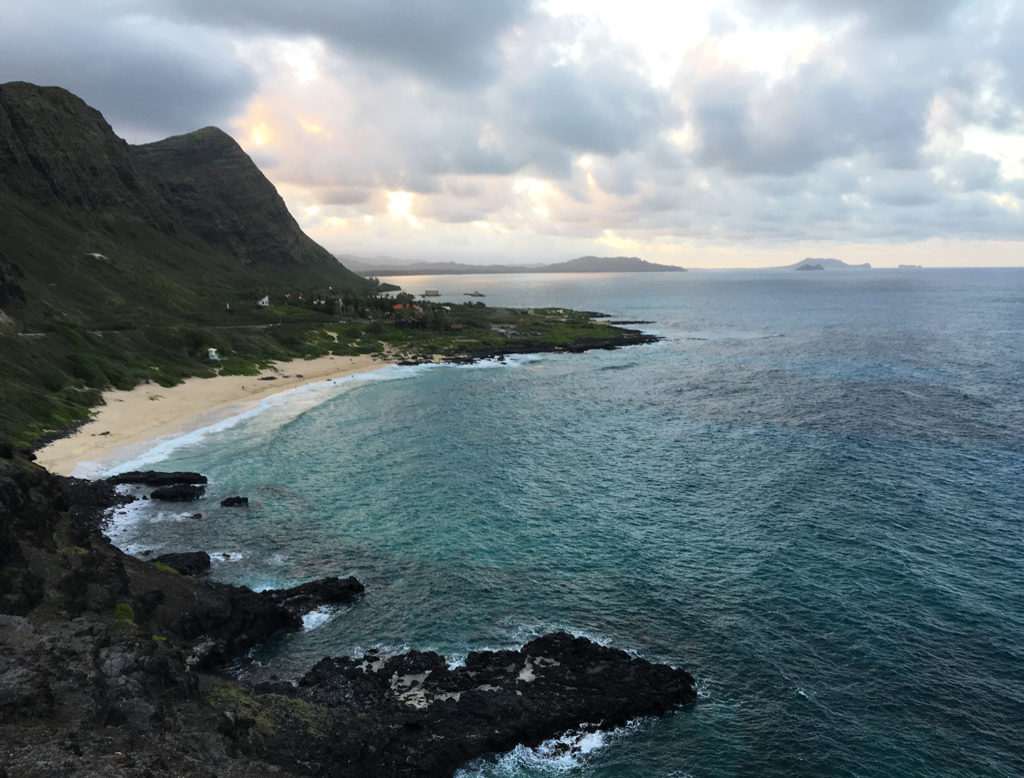
Health & Welfare
Born in Hawaii, SPF broodstock shrimp industry faces globalization
The next step for shrimp breeding will be developing animals that aren’t just disease-free, but increasingly resistant to multiple pathogens. The industry is globalizing, with suppliers setting up shop overseas. But its birthplace will always be Hawaii.
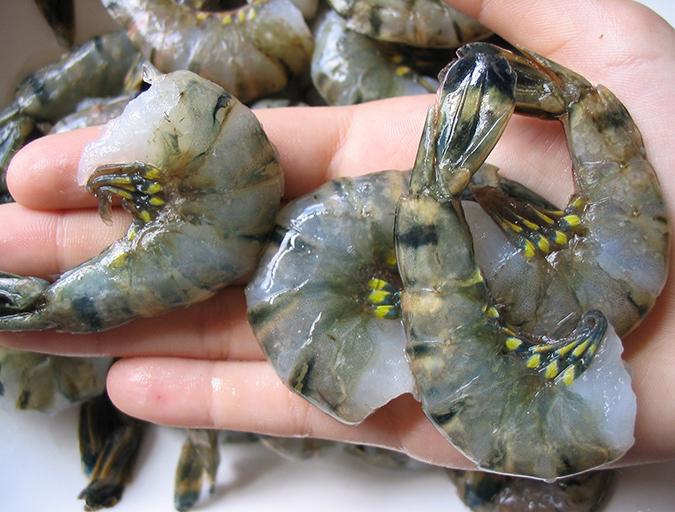
Intelligence
Global shrimp survey: GOAL 2016
The GOAL 2016 global shrimp production survey showed a strong rebound in 2014 (up 10 percent to 4.18 MMT), followed by a decline in 2015 (down 5.4 percent) and another recovery forecast for the next three years. Global production is expected to reach around 4.44 MMT in 2018, barring a new disease crisis.



